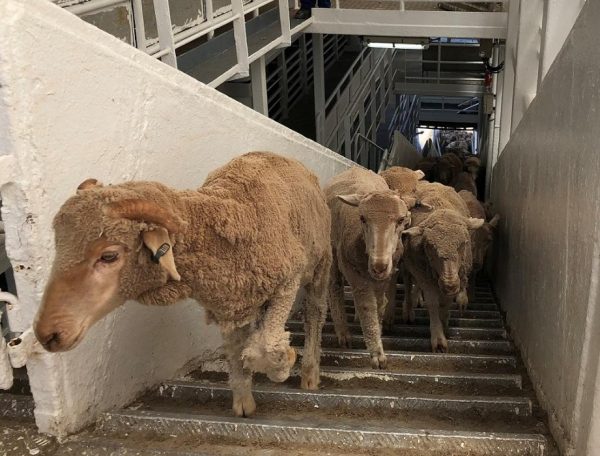
Australian sheep loading onto an export vessel.
AUSTRALIA’S live sheep export industry lost an estimated $83.6 million due to the three-month suspension in 2018 and about $65.8 million from the moratorium last year, according to a report released this week.
The report carried by Mecardo for LiveCorp and Meat & Livestock Australia examined how the 3-4 month halt to live sheep exports to the Middle East in 2018 and 2019 affected people and businesses involved in the trade, particularly in Western Australia.
Mecardo interviewed more than 60 supply chain participants and did a desktop analysis of revenue and sheep delivery rate impacts, following changes to regulations and management practices over the past 18 months.
Based on modelling of a 12-month trade versus actual numbers exported, the report estimated the industry nationally lost $83.6 million due to the three-month suspension during 2018, and $65.8 million due to the moratorium in 2019.
LiveCorp chief executive officer Sam Brown said WA farmers’ share of the lost revenue was estimated to be up to $15 million in 2018 and up to $12 million in 2019.
“The income of other participants such as shearers, livestock transporters, veterinarians, fodder manufacturers and livestock agents was affected to varying degrees, depending on what proportion of their income was derived from live exports, and whether alternative options existed during the moratorium.
“In many cases, there was also a social and emotional impact on both workers and their communities,” he said.
“Some had to squeeze 12 months of work into eight months, leading to massive stress followed by periods of unemployment.”
Analysis of the impact of live sheep export moratorium
Mr Brown said while it is abundantly clear that the future of the industry is dependent on getting animal welfare right and demonstrating its continued improvement, it is important to understand how changes affect the economic wellbeing of the full supply chain – particularly regional communities.
“Exporters introduced the moratorium to manage the risk of heat stress during shipments into the northern summer.
“They knew it would have a financial and social cost to everyone in the supply chain, but also knew it was vital to de-risk the trade in response to community concerns in order to maintain the benefits of the industry for the rest of the year,” he said.
“Interviews with farmers highlighted the importance of having live exports available in WA as a risk management measure.
“Without it, they will be forced to shift into more cropping or cattle-focused enterprises, which decreases the diversity of their incomes,” Mr Brown said.
Sheep mortality levels half the five-year average in 2019
The report also shows mortality levels on live sheep shipments in 2019 were half the five year average for each month, which is put down to changes to shipping practices during and since 2018, including reduced stocking densities and the introduction of Independent Observers as well as the moratorium.
“While participants such as farmers, livestock agents and shipping services will likely adapt and work around an annual moratorium, there is likely to be rationalisation in many other parts of the supply chain.
“Mecardo interviews show there’s widespread concern within WA’s sheep industry that ongoing uncertainty, instability and negativity regarding the trade will see the continued loss of support services,” Mr Brown said.
The report ‘Impact of the live sheep export trade’s self-imposed moratorium and regulatory changes’ can be found here.

HAVE YOUR SAY